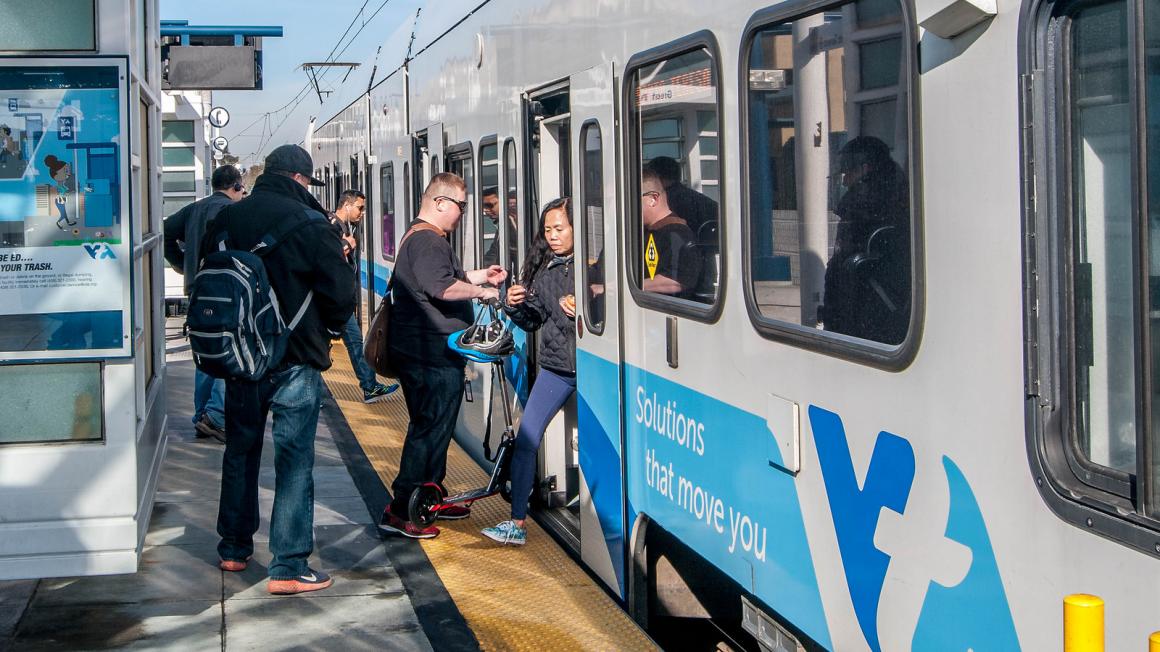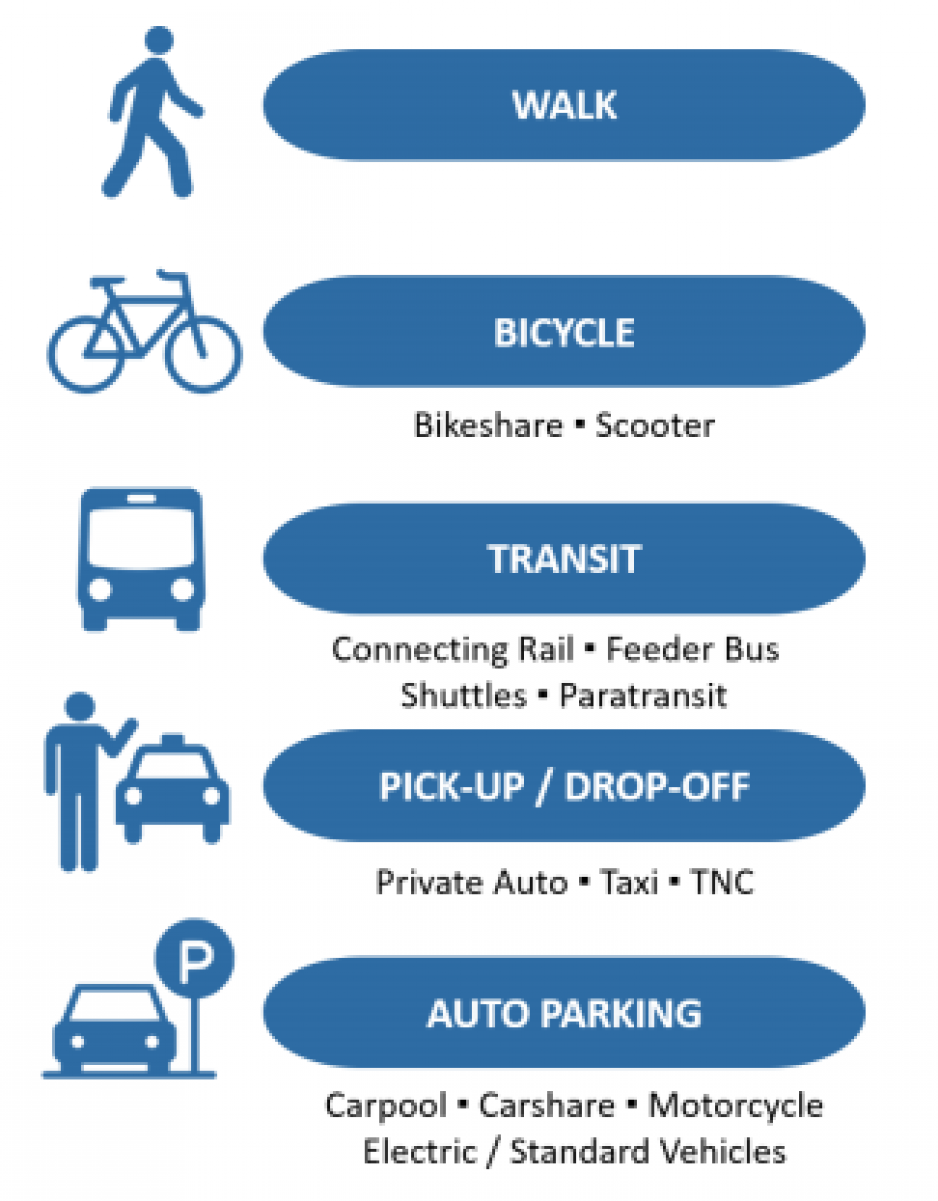The VTA Board of Directors approved two new transit-supportive policies at its December 6, 2018 meeting which aim to formalize procedures for Station Access and parking decisions for Transit-Oriented Developments.
When building or improving the built environment at and near VTA transit stops and centers, the new Station Access Policy will guide planning and investment decisions regarding station access for all modes, and prioritizes those modes. The Policy provides clear direction for maximizing functionality of the stations for all users while prioritizing investments that support sustainable options, such as walking, biking and transit. Here, sustainability refers not only to environmental health and minimizing pollution, but also sustaining population growth. The policy prioritizes station access with the following hierarchy:
The second transit-supportive policy that was approved clarifies how VTA will balance parking within Joint Development projects on VTA-owned property. VTA has identified 25 priority sites for Transit Oriented Development (TOD) projects. On the whole, parking spaces at rail stations are an underutilized resource, and free parking has not proven to induce ridership.
When VTA in partnership with a developer builds on the former parking sites, VTA will need a clear parking policy that is consistent with a strategy for long-term growth in rail transit ridership, and accommodates the parking needs of the new development. The policy guides decisions about parking which we do not take lightly when a parking structure costs upwards of $50,000 per space to build. Parking demand varies by time of day and day of the week, and will change over the years due to myriad factors including emerging technologies and ride hailing services also known as Transportation Network Companies (TNCs).
The new VTA TOD Parking policy establishes a clear process for evaluating future TOD and station parking needs in order to maximize revenues and ridership. Best practices from peer transit agencies include elements such as shared parking, paid parking, parking benefit districts, and coordination with TNCs.
The two policies are effective immediately.

